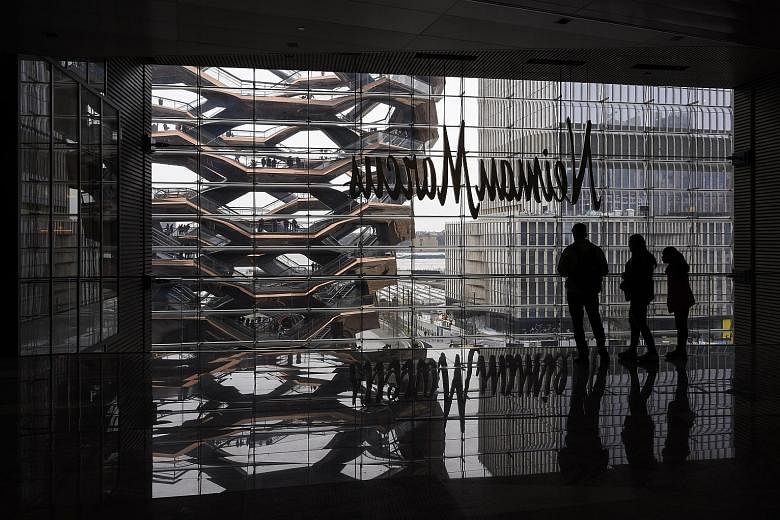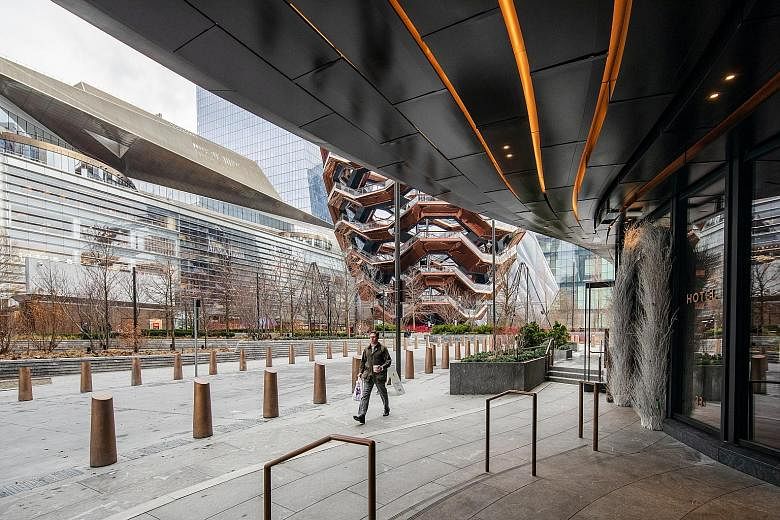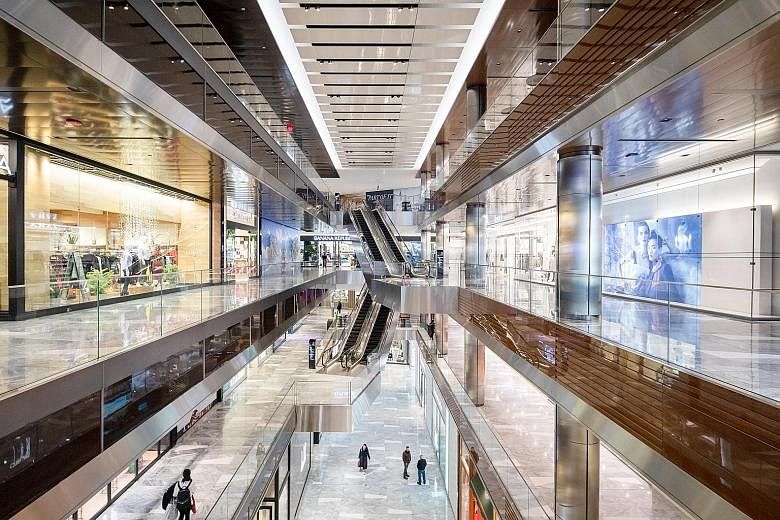NEW YORK • Mixed-use projects have been a hallmark of the American urban renaissance over the past couple of decades. They are often thriving complexes with residences, offices, plazas, hotels, shops and restaurants.
Developers like them for the scope, and business owners like them for the round-the-clock density of people.
In some cases, these projects have transformed whole areas: The 11ha Hudson Yards over an old train yard brought new life to an underused corner of Manhattan, and the 23ha Water Street Tampa in Florida will connect the city's downtown with its waterfront.
In general, they have helped define the live-work-play ethos that many younger professionals in the United States seek in cities.
But the coronavirus threatens to upend the allure of retail and restaurants in these developments. Safety concerns and a changing patchwork of state and local virus-related regulations have led developers to rethink the layouts and designs of such areas.
Starting a mixed-use project can be challenging without all the pieces in place, and the uncertainty over how to proceed has tied developers' hands. They cannot pitch the office or residential space until they have lined up the retail and restaurants.
And because some businesses are having difficulty paying rent during this coronavirus pandemic, developers are being forced to look at other ways to collect payment, including a model that bases rent solely on sales, insulating the tenant more from downturns.
But developers agree that safety measures are necessary if projects are to retain the shops and restaurants on the lower levels that help draw people to the offices, hotels and residences on top.
The return to normal will not come simply by limiting crowd sizes, which will not be possible for shops and restaurants that are already surviving on a slim profit.
To address that challenge, developers and designers are mulling over interior and exterior changes that could drastically repurpose space, an overhaul that will require both customers and merchants to readjust their experiences and expectations.
For example, a lot of space once used for sales or dining will now be taken over by behind-the-scenes work as vendors continue to shift to more takeout and pickup service.
"What we've seen in the past with our clients is that they really want to maximise the front of the house," said Ms Lauren Chipman, chief executive of Chipman Design Architecture in Des Plaines, Illinois. "That is really going to have to change. I think what we're going to see is some of the front-of-house recaptured for operations."
Some restaurants in mixed-use developments might embrace the ghost kitchen concept and switch fully to takeout and delivery.
Less drastically, operating safely might focus on controlling the flow of the customers who do go inside. Architects and contractors say they have received requests from clients for graphics and other signage to guide people through stores and restaurants so they do not bunch up or run into one another.
There is also growing demand for motion-enabled technology in a range of areas, including toilets and sinks in restrooms, doors, checkout counters, clothing racks and lifts.
Many mixed-use projects already have the infrastructure in place for such a shift away from touch, said Mr Webber Hudson, an executive vice-president at Related Companies, the lead developer for Hudson Yards. Air filtration systems originally intended for heating, cooling and odour control can be used to fight pathogens.
Hand sanitiser will be omnipresent, merchandise will be spaced farther apart, and material that is deemed as possible short-term hosts for the coronavirus, such as marketing placards and bric-a-brac sometimes found at checkout, will be gone.
For restaurants, they could survive lost foot traffic from a reduced office population by relying on condo and apartment dwellers.
So it is not unusual for developers to promote the retailers and restaurateurs they have leased space to before an opening, and even the ones they might land, because those tenants help attract residents and other businesses.
The plan for the redevelopment of the former Boston Globe headquarters, for instance, has promoted the possibility of a brewery and beer garden. The Plaza at Coral Gables, a housing-office-retail hybrid in the Miami area, includes a 30,000 sq ft entertainment hub with bowling lanes and bocce courts. And Fifth & Broadway, one of the largest recent developments in Nashville, Tennessee, is expected to feature an Apple store.
Developers and owners then need to find a way to retain such attractions as pandemic-related restrictions ease, said Mr Phil Colicchio, an executive managing director at brokerage firm Cushman & Wakefield who specialises in advising independent restaurants.
"Because the alternative is nothing," he said. "The alternative is a ghost town."
NYTIMES



